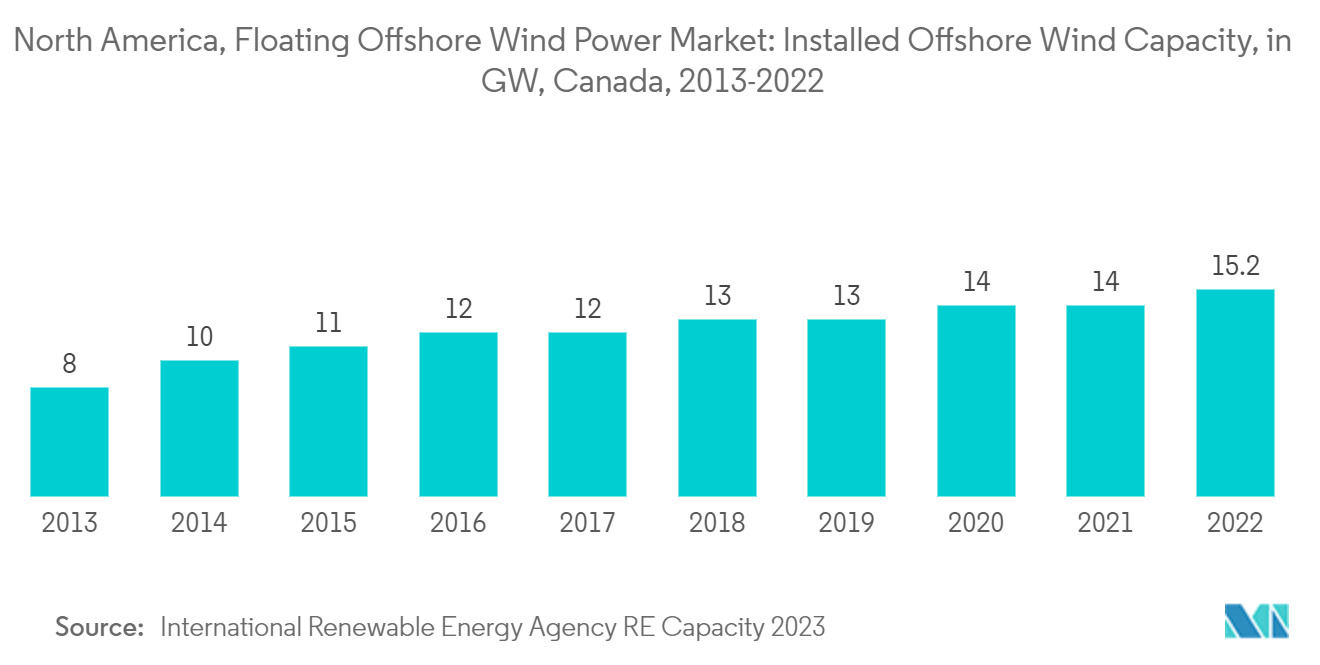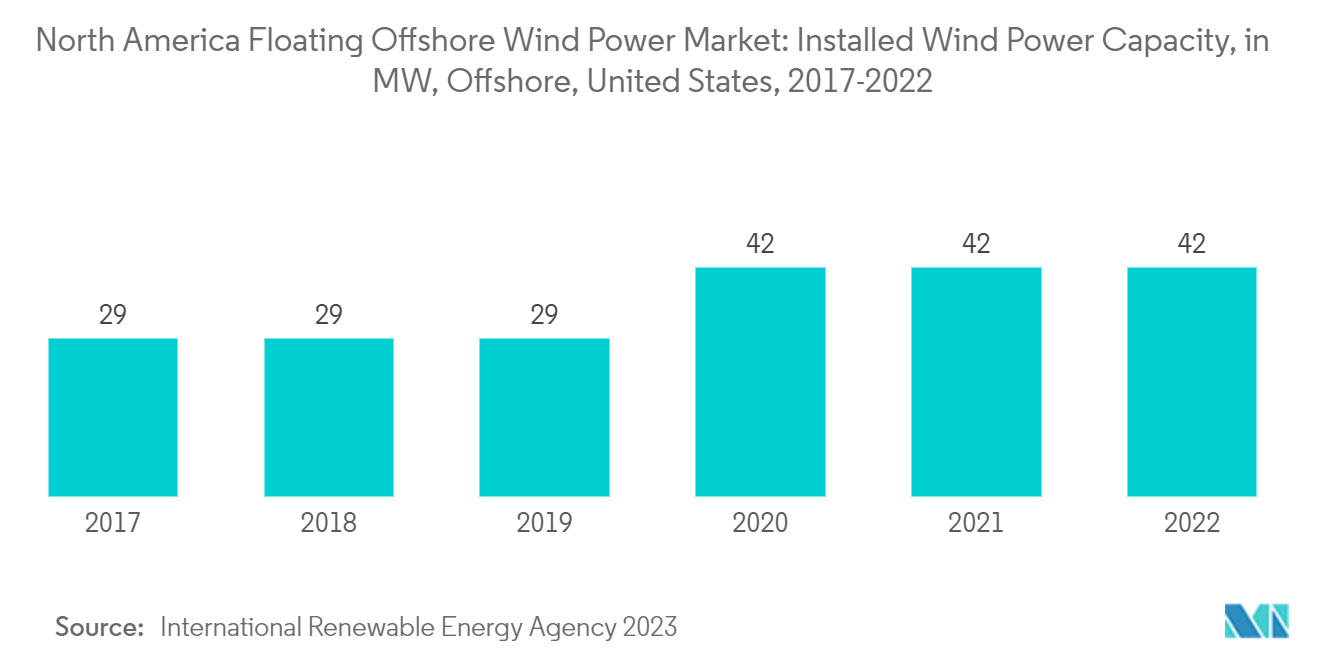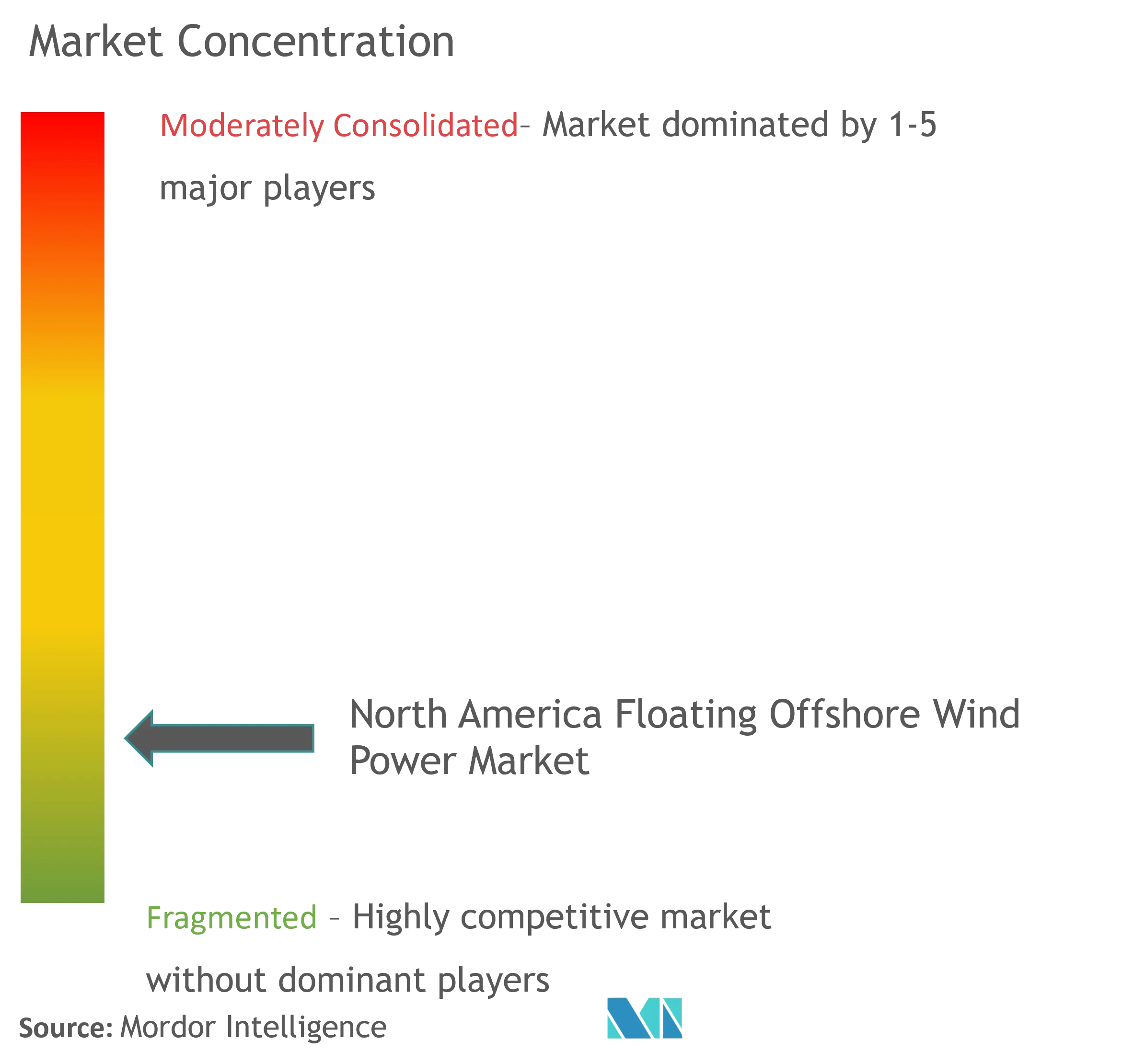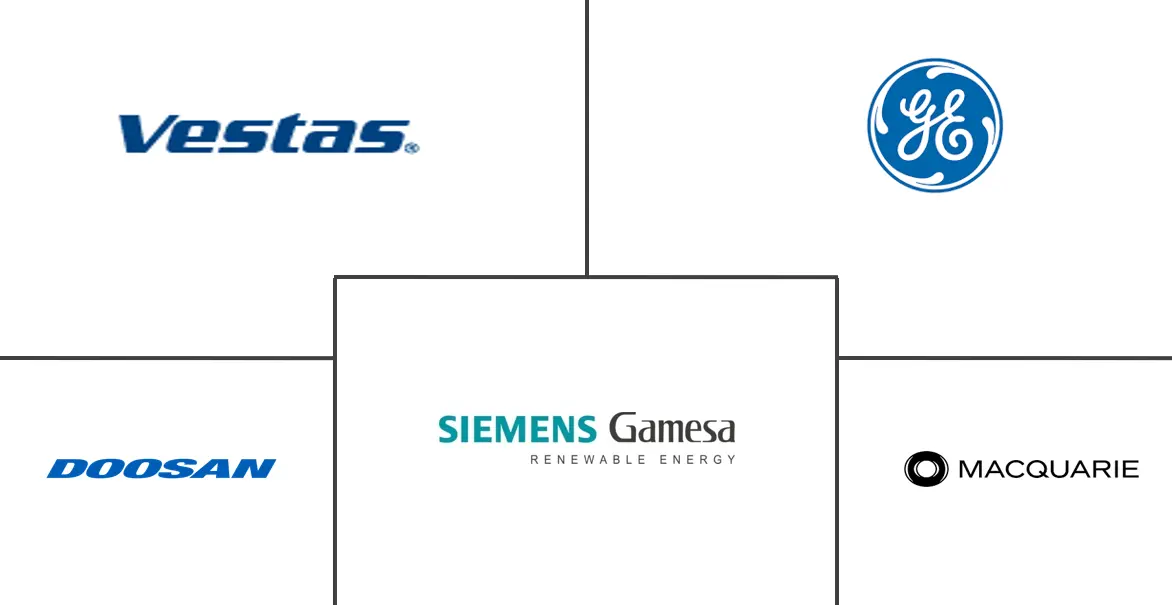North America Floating Offshore Wind Power Market Size and Share

North America Floating Offshore Wind Power Market Analysis by Mordor Intelligence
The North America Floating Offshore Wind Power Market size in terms of installed base is expected to grow from 2.41 megawatt in 2025 to 467.47 megawatt by 2030, at a CAGR of 186.8% during the forecast period (2025-2030).
- Over the medium term, the growing demand for offshore wind power coupled with international commitments to reduce carbon emissions are expected to drive the growth of the market studied during the forecast period.
- On the other hand, increasing adoption of alternate sources of clean power generation, mainly gas and solar power, are expected to hinder the growth of Floating Offshore wind power during the forecast period.
- Nevertheless, technological innovation and adaptation of the latest technologies in Floating Offshore wind power are likely to create opportunities for the Floating Offshore wind power market in the forecast period.
- The United States dominates the market and is also likely to witness the highest CAGR during the forecast period.
North America Floating Offshore Wind Power Market Trends and Insights
Deep Water as a Significant Segment
- Deepwater floating offshore wind power technology is the most economically viable technology because, at these depths, the cost of deployment of fixed-base structures is prohibitively high. Additionally, most of the total technical offshore wind resources in the United States lie over water depths greater than 60 m.
- Floating offshore wind power technology design is a relatively shallow draft and hydrodynamic stability after wind turbine installation. Other benefits include depth independence (above 30 meters), broad weather window for installation, insensitivity to subsea soil conditions, relatively cheap and simple mooring systems, simple installation and decommissioning, minimal level of movement due to heave plates, and overall lower risk.
- Floating deepwater offshore wind power projects offer more advantages than onshore wind farms. The wind speeds are higher and constant in the offshore regions, and the areas offer fewer hindrances due to no ground nearby in the vicinity.
- According to the International Renewable Energy Agency Renewable Energy Capacity 2023 data, the installed wind power capacity reached 15.2 GW in 2022, increasing from 14 GW in 2021.
- Both the United States and Canada offer significant coastal and deepwater offshore areas, thus providing excellent floating offshore wind power capacities. The Sable Island Bank in Nova Scotia, Atlantic Canada, could churn up to 70,000 Gigawatt-hours of electricity in a year, thus helping Canada reach its goal of net zero in 2050.
- Similarly, offshore wind resources are plentiful enough to generate up to a quarter of the United States' electricity by 2050, thus helping the country meet its global climate goals. In 2023, the United States had two small wind farms off the Rhode Island and Virginia coasts. The country's first commercial-scale wind farm off Martha’s Vineyard was constructed on the foundations, Massachusetts, in June 2023.
- Hence, due to the above points, the deep water segment will dominate the market during the forecast period.

United States Expected to Dominate the Market
- The wind power sector in the United States is receiving immense support from the government due to the America First policy, which aims to boost domestic energy production. The floating offshore wind power sector is considered a major development area, as the country has a large coastal area available for leasing.
- The United States was the second-largest country in terms of total installed wind energy capacity, recording 140.1 GW of capacity in 2022, or more than 80% of the total wind energy capacity in North America.
- According to the Energy Institute Statistical Review of World Energy 2023 data, the electricity generation from wind power reached 439.2 terawatt-hours, increasing from 2021.
- The United States has established nearly 45,000 MW of offshore wind procurement targets. Additionally, around 10.3 GW of offshore wind energy is expected by 2026, with the development of 12 offshore wind energy projects. Such government initiatives are likely to increase the floating offshore wind power market during the forecast period.
- According to the International Renewable Energy Agency Renewable Energy Capacity 2023 data, the offshore wind power capacity reached 42 MW in 2022.
- Hence, owing to the above points, the United States is expected to see significant growth in the Offshore Floating wind power market during the forecast period.

Competitive Landscape
The North American Offshore Floating wind power market is moderately fragmented. Some of the key players in this market (in no particular order) include Vestas Wind Systems AS, General Electric Company, Siemens Gamesa Renewable Energy SA, Doosan Heavy Industries & Construction, and Macquarie Group.
North America Floating Offshore Wind Power Industry Leaders
-
vestas wind systems a/s
-
General Electric Company
-
Siemens Gamesa Renewable Energy SA
-
Doosan Heavy Industries & Construction
- *Disclaimer: Major Players sorted in no particular order

Recent Industry Developments
- Nov 2023: On November 21st, 2023, Denmark's Orsted and US's Eversource Energy announced the installation of the South Fork offshore wind project, the first of its 12 turbines, in New York State.
- Aug 2023: On 24th August 2023, SBM Offshore JV and DP Energy's Joint Venture firm, Nova East Wind, announced the proposal to develop Canada’s first floating offshore wind farm with a generation capacity of 300-400 MW.
North America Floating Offshore Wind Power Market Report Scope
Floating wind power is electricity generated on an offshore wind turbine mounted on a floating structure that allows the turbine to generate electricity in water depths where fixed-foundation turbines are not feasible. The floating offshore wind power market is segmented by water depth and geography. By water depth, the market is segmented into shallow water (less than 30 m depth), transitional water (30 m to 60 m depth), and deep water (higher than 60 m depth). The report also covers the installed capacity and forecasts for the floating offshore wind power market.
| Shallow Water ( less than 30 m Depth) |
| Transitional Water (30 m to 60 m Depth) |
| Deep Water (higher than 60 m Depth) |
| United States |
| Canada |
| Mexico |
| By Water Depth (Qualitative Analysis Only) | Shallow Water ( less than 30 m Depth) |
| Transitional Water (30 m to 60 m Depth) | |
| Deep Water (higher than 60 m Depth) | |
| Geography | United States |
| Canada | |
| Mexico |
Key Questions Answered in the Report
How big is the North America Floating Offshore Wind Power Market?
The North America Floating Offshore Wind Power Market size is expected to reach 2.41 megawatt in 2025 and grow at a CAGR of 186.80% to reach 467.47 megawatt by 2030.
What is the current North America Floating Offshore Wind Power Market size?
In 2025, the North America Floating Offshore Wind Power Market size is expected to reach 2.41 megawatt.
Who are the key players in North America Floating Offshore Wind Power Market?
vestas wind systems a/s, General Electric Company, Siemens Gamesa Renewable Energy SA and Doosan Heavy Industries & Construction are the major companies operating in the North America Floating Offshore Wind Power Market.
What years does this North America Floating Offshore Wind Power Market cover, and what was the market size in 2024?
In 2024, the North America Floating Offshore Wind Power Market size was estimated at -2.09 megawatt. The report covers the North America Floating Offshore Wind Power Market historical market size for years: 2019, 2020, 2021, 2022, 2023 and 2024. The report also forecasts the North America Floating Offshore Wind Power Market size for years: 2025, 2026, 2027, 2028, 2029 and 2030.
Page last updated on:
North America Floating Offshore Wind Power Market Report
Statistics for the 2025 North America Floating Offshore Wind Power market share, size and revenue growth rate, created by Mordor Intelligence™ Industry Reports. North America Floating Offshore Wind Power analysis includes a market forecast outlook for 2025 to 2030 and historical overview. Get a sample of this industry analysis as a free report PDF download.



